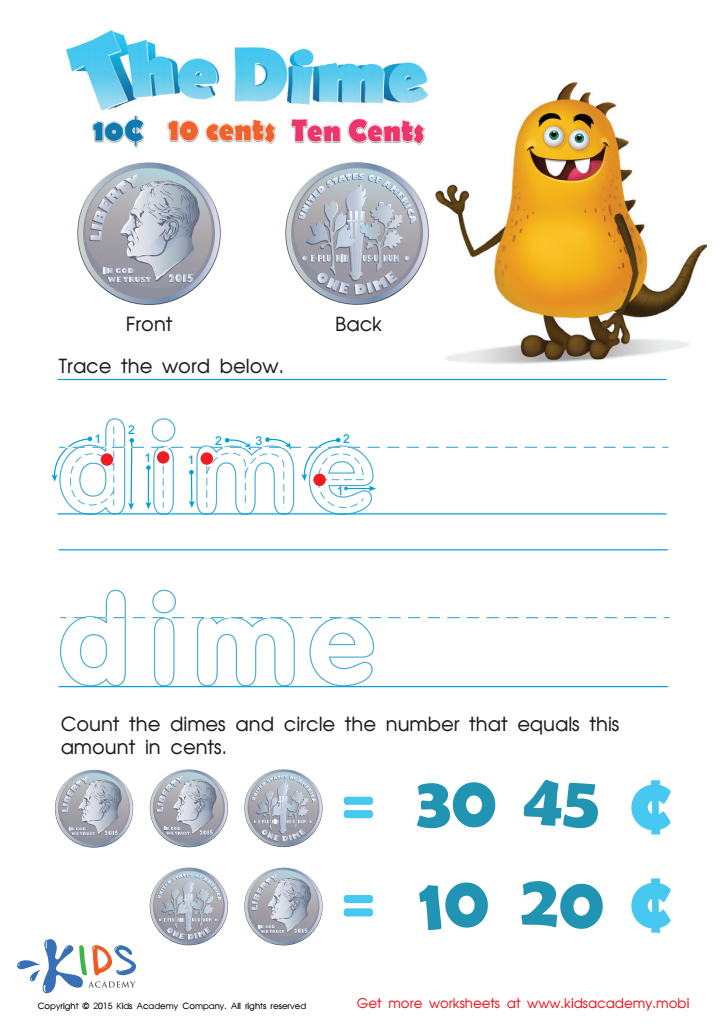Normal Money Worksheets for Ages 6-7
1 filtered results
-
From - To
Introducing our exclusive collection of Normal Money worksheets, meticulously designed for children Ages 6-7! Our engaging and educational worksheets are the perfect tool to introduce your little ones to the basics of money management and recognition. Crafted by experienced educators, each worksheet is filled with interactive activities, from identifying different coins and bills to simple addition and subtraction of monetary values. These Normal Money worksheets for Ages 6-7 are tailored to stimulate young minds, making learning about money fun and accessible. Dive into our worksheets and set the foundation for financial literacy in a joyful and meaningful way!


Ten Cents or the Dime Money Worksheet
Normal Money worksheets tailored for Ages 6-7 hold an indispensable role in laying a strong foundation for financial literacy among young learners. At this crucial developmental stage, children start to grasp basic mathematical concepts, making it the perfect time to introduce them to the concept of money. These worksheets are not merely about identifying coins and notes; they are carefully designed to teach children how to effectively manage and understand the value of money through engaging and age-appropriate activities.
The Normal Money worksheets for Ages 6-7 are beneficial in several ways. Firstly, they introduce children to essential financial vocabulary, enabling them to differentiate between various forms of currency and understand transactions. This builds a critical base for more complex financial learning in the future. Secondly, these worksheets incorporate practical exercises that simulate real-life scenarios, such as making purchases or saving, which are crucial for developing good money management skills from an early age.
Furthermore, by integrating basic arithmetic operations like addition and subtraction, the Normal Money worksheets seamlessly blend math skills with financial education, reinforcing numerical fluency through a practical context. This dual focus not only enhances a child's mathematical abilities but also cultivates an early awareness of the importance of financial responsibility.
In conclusion, Normal Money worksheets for Ages 6-7 are a vital educational tool. They not only make learning about money fun and interactive but also set children on a path to becoming informed and responsible individuals in their future financial dealings.

 Assign to the classroom
Assign to the classroom












